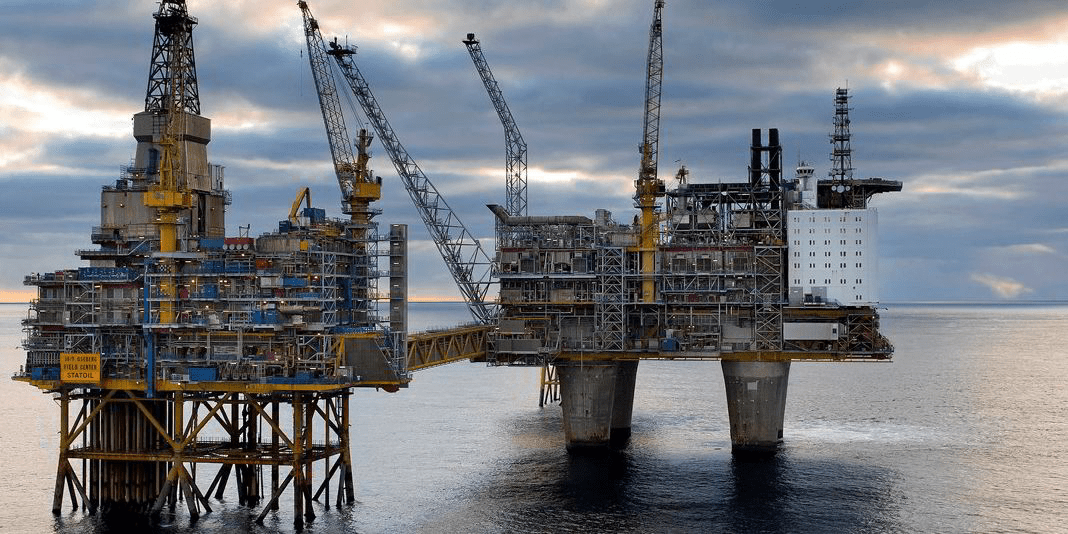Oil and gas production in Norway has increased significantly since the beginning of this year (2023); This enhances the country’s role as a safe and stable supplier of energy to Europe, in light of the old continent’s endeavor to secure supplies away from Russia.
After Russia’s invasion of Ukraine, Norway became Europe’s largest natural gas exporter, as a result of the EU’s goal to reduce Russian gas imports, according to a press release obtained by the energy platform.
“Norway has strengthened its role as a predictable and long-term energy supplier to Europe, especially with regard to gas,” said Director General of the Norwegian Oil Directorate, Torgir Stordal.
Oil and gas production in Norway 2023
Norway’s gas production during the first 5 months of 2023 amounted to about 50.5 billion standard cubic meters, according to a statement by the Norwegian Oil Directorate.
“Production for the first four months was on par with last year’s level, which is the year we delivered the most energy in the form of gas,” said Stordall. “The maintenance work in May caused production to drop somewhat.”
Norway produced 43 million standard cubic meters (270 million barrels) of oil from the Norwegian shelf during the first 5 months of this year (2023), which is slightly higher than in 2022.
This is because the second phase of the Johan Sverdrup field in the North Sea came online near the end of last year, and production of additional fields began in the first 6 months of 2023.
The following graph – prepared by the specialized energy platform – shows the proven natural gas reserves in Norway:
Oil and gas discoveries in Norway
Oil and gas exploration activity in Norway has been high so far in 2023, with 12 of the 18 exploration wells completed, and with discoveries in more than half of them, or 7 to be exact.
The authorities expect exploration activity to continue until the fall, and the total number of wells is expected to be just under 40 exploration and appraisal wells in the current year (2023), which means that exploration is steady at a high level.
The total volume of discoveries ranges between 9 and 32 million standard cubic meters (56.6 and 201 million barrels) of oil equivalent, according to information monitored by the energy platform.
“Most wells are drilled close to infrastructure, which could result in valuable additional resources for existing fields,” said Torgeir Stordal, Director General of the Norwegian Oil Directorate. “At the same time, it is important that companies also drill wells in less explored areas.”
Oil and gas investments in Norway
This week, 19 oil and gas projects on the Norwegian Shelf received the green light from the Norwegian authorities, with investments exceeding NOK 200 billion ($18.2 billion).
These projects include new developments, further developments in existing fields, and project investments, to promote improved recovery from existing fields.
“Oil and gas production on the Norwegian shelf will naturally decline after 2025, but these projects will help stem the fall,” said Torgeir Stordal, director general of the Norwegian Oil Directorate.
“At the same time, the projects provide a basis for high activity in the Norwegian supplier industry, and cement the position of the Norwegian shelf as a stable oil and gas resource for many years to come,” he added.
In January, the Norwegian Ministry of Oil and Energy awarded participation interests to 25 companies in pre-designated areas for further exploration on the Norwegian Continental Shelf.
The Norwegian Oil Directorate indicated that there are 29 licenses out of 47 production licenses in the North Sea, 16 in the Norwegian Sea, and 2 in the Barents Sea.
More new regions were added in the pre-selected 2023 regions in May, with the deadline for applications in late August.

Carbon capture and storage
Norway has taken multiple steps to decarbonize its oil and gas industry, reaching its carbon neutrality goals.
And when it comes to the country’s energy transition tools, it places electrification of oil and gas assets, offshore wind, carbon capture and storage, and hydrogen as primary drivers for emissions reductions, according to Offshore Energy.
Therefore, interest in carbon storage in the Norwegian Shelf is growing, and so far this year two areas have been declared, and two storage exploitation licenses have been granted by the authorities.
“CCS is an important climate metric that can also provide many opportunities for value creation,” said Stordall.
He added: “Norwegian Oil Directorate has unique experience and knowledge about the subsoil on the shelf, and we use this knowledge to choose the right place to store carbon.”

Leave a Reply